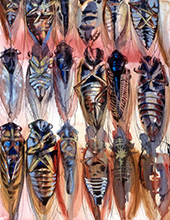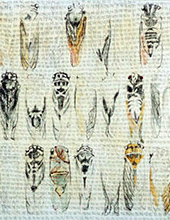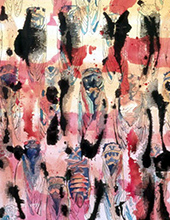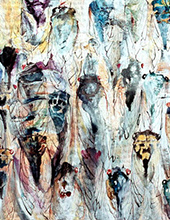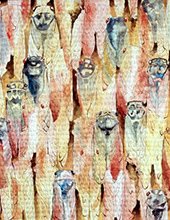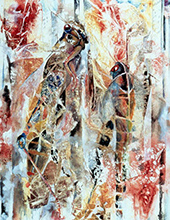Brood Year
The series “Brood Year” has evolved from my exploration of the ancient and universal links between insects and mankind, the cycles of life, and my own progression.
Periodical cicadas spend most of their lives underground as nymphs, feeding on tree roots until the “brood year” for their particular species arrives. One early spring morning in the brood year, these insects emerge en masse, shed their primitive skins, and congregate in the treetops by the thousands. Their mating call produces a wave of sound that drowns out everything in the vicinity. The cicadas mate, lay eggs, and die within six weeks, and the next thirteen-year cycle begins.
I grew up in middle Tennessee, where the so-called “thirteen-year locusts” suddenly appeared during the summer of my own thirteenth year. As they roared in the trees above the playground, I realized that I would not experience this phenomenon again until I was twenty-six. I began to count off the years of my life in thirteen-year increments, and I suddenly felt very old. The memory stuck with me. In later years, I learned more about the life cycle of the periodical cicada, and I began to think of each successive brood year as a passing generation. I also learned that because this insect apparently rises again out of the earth, the cicada is, in some ancient cultures, a symbol of rebirth and resurrection.
True locusts play a darker role in human history. Throughout the Bible, locusts, grasshoppers, and other insects appear frequently as agents of plague or devastation. Sometimes they serve as a point of comparison to describe ravaging hordes of invaders. In the Book of Revelation, locusts are instrumental in facilitating the End Times.
As modern development has destroyed natural habitats and limited the numbers of various species, including the cicada, I find myself considering both the passing generations of all beings within the earth, and the ways in which ancient plagues revisit our civilization.
